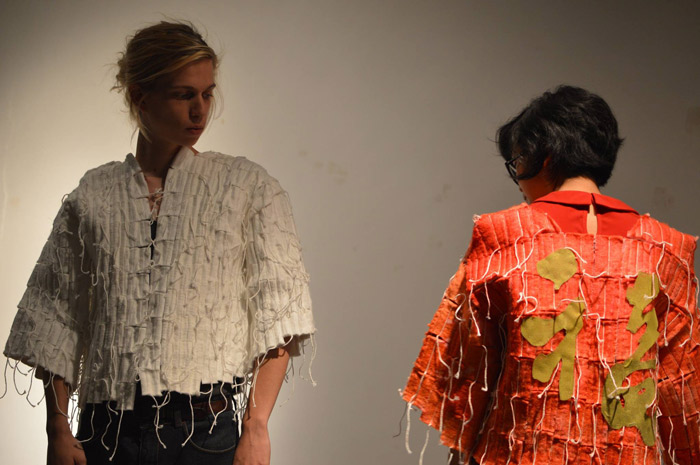McGill offers a very limited number of fine arts classes. However, the Visual Arts Society provides students with an opportunity to explore a multitude of artistic domains and connect with other students.
On Nov. 16 2016 the McGill Students’ Visual Arts Society hosted their most anticipated event of the fall semester: “Visual Voices.” The event featured McGill Professor Julia Skelly, Art Historian Emily Robertson, U3 Mcgill Medical Student Anita Raj, and U2 Concordia Fine Arts Student Florence Yee, who spoke about their relationship with art.
Professor Julia Skelly shared a part of her research in feminism and art, as seen in her upcoming 2017 book, “Radical Decadence.” Skelly discussed the prominent messages in artwork by feminist artists, including Mickalene Thomas and Shary Boyle.
Skelly emphasized artists’ depictions of how women are often seen as excessive and self-destructive by society. This theme is notable in Boyle’s 2005 work, “Untitled.” The artwork is a lace-draped painted porcelain figurine; the frilly dress the figure wears engulfs her, appearing to restrict her ability to move. Skelly also shared Nava Lubelski’s 2005 sculpture “Clumsy,” a tablecloth hand-embroidered to appear wine-stained, making reference to social perceptions of alcoholism and a lack of self-control in women.
Florence Yee discussed the power of using art to tackle race and gender politics. Yee shared her struggles with being recognized for her work as an artist rather than for her racial identity. She showcased “Menu of Exoticism” (2016), a satirical work depicting a menu with the racial questions and remarks from viewers that she has received int he past.
Yee has also used her artwork to address issues of femininity and culture that she feels are often sidestepped and neglected.
“Comfort in Discomfort” (2016) features two women wearing vests made of tampons sewn together. One vest features the character of the Chinese red envelope. Yee conveys the strength in women literally wearing their femininity on their sleeves. This work is especially powerful in an age when tampons continue to be stigmatized and seen as taboo in various cultures.
The Visual Arts Society’s Vice-President Events Magdalena Morales felt that Yee’s struggles were relatable for fellow students grappling with their cultural identity.
“I appreciated the ethnocultural aspects she presented through her art,” Morales said. “It really struck me when she said, ‘How do I reconcile the Asian part of me with the other part that cannot be Asian? This is exactly how I feel with my Canadian-Venezuelan identity.”
Art Historian Emily Robertson gave a talk encouraging artists to fight for proper credit for their work. Visual Arts Society Co-President Rohita Ramayanam voiced her own sentiments on making a career as an artist.
“You have to actually be determined to fight for a career or a job, and you’ve got to put yourself out there,” Ramayanam said. “A lot of us […] struggle with the [feeling of], ‘I’m interested in that, but not really sure what I want to do.’ You might be interested in a lot of things, but you need to have the drive to make success from that, to do something meaningful.”
The final speaker of the night, U3 medical student and childhood cancer survivor Anita Raj, delivered a moving presentation on the therapeutic effects of origami. Raj brought new meaning to an art-form that is often associated with simple paper cranes.
Having discovered origami at a young age, Raj has introduced it to others in countless ways over the years—facilitating educational summer camps, volunteering at the Montreal Children’s Hospital, and presenting at the Canadian Conference on Medical Education in 2016. She believes that while it is not for everyone, origami can be extremely therapeutic for some.
Ramayanam emphasized that she is grateful for the Visual Arts Society, through which she has connected with individuals who share her interest in art.
“Since McGill doesn’t have a Visual Arts program, I hope people realize that there is a club on campus that specializes in it,” Ramayanam said. “There is a community where you can share that interest with like-minded people.”








